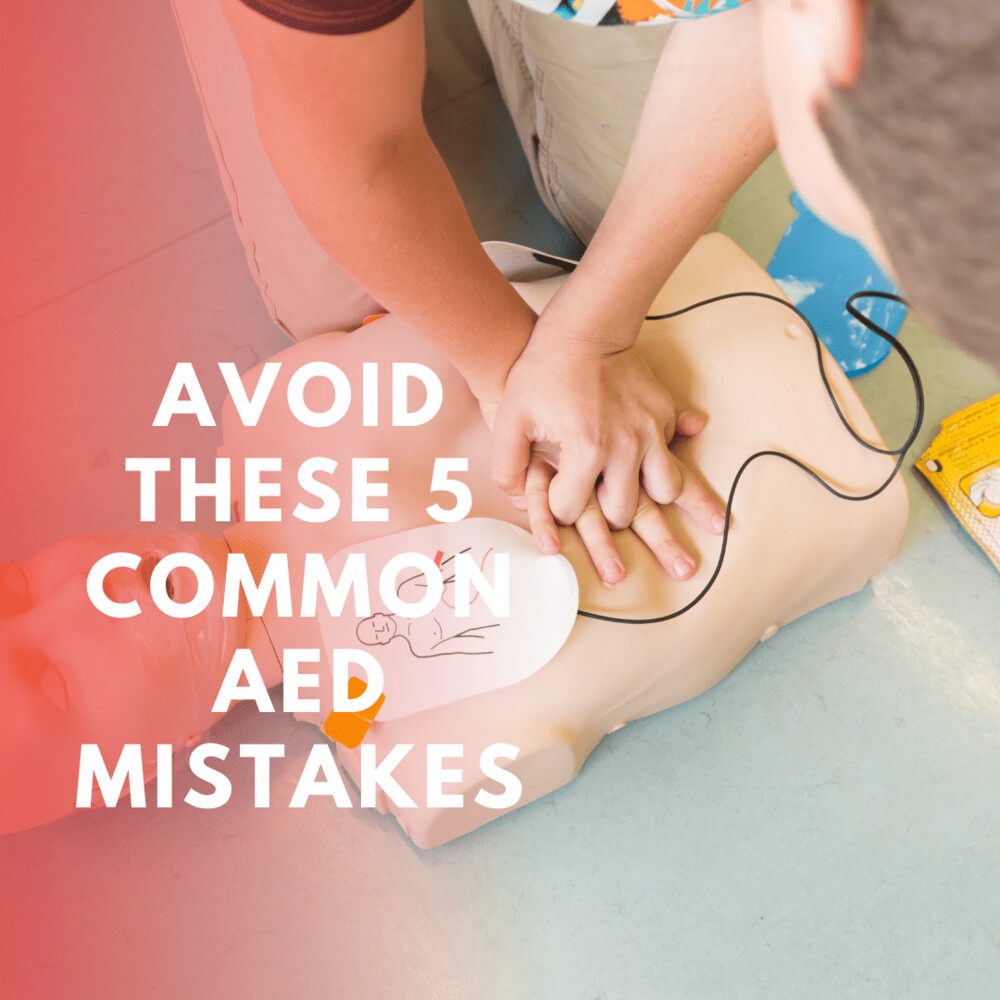Avoid These 5 Common AED Mistakes for Safe and Effective Defibrillation | Essential CPR Guide

In emergencies, knowing how to use an Automated External Defibrillator (AED) can be a lifesaver. However, improper use can lead to serious consequences. Let's go deep into five common mistakes people make when using AEDs and how to ensure safe and effective defibrillation.
Failure to Check Response and Breathing
Before using an AED, it's crucial to assess the victim's responsiveness and breathing. Simply put, if they're unresponsive and not breathing normally, it's time to act. Never skip this vital step, as it could delay crucial care and potentially worsen the outcome.
When checking for a response, gently shake the victim's shoulders and ask loudly, "Are you okay?" If there's no answer, continue to check for normal breathing by observing chest movements and listening for breath sounds.
If the victim is unresponsive and not breathing normally, immediately call for help and start CPR. Remember, every second counts in cardiac arrest situations, and initiating CPR promptly can significantly improve the chances of survival.
Incorrect Pad Placement
Proper pad placement is paramount for effective defibrillation. AED pads are designed to deliver electrical shocks to the heart and must be positioned correctly on the victim's bare chest. Always adhere to the diagrams on the AED pads and follow these steps for proper placement:
- Remove clothing: If the victim's chest is not bare, remove any clothing covering the chest to ensure direct contact with the skin.
- Pad placement: Attach the pads to the upper-right chest area (above the right nipple) and lower-left chest area (below the left nipple), as illustrated on the AED pads.
- Ensure firm adhesion: Press the pads firmly onto the chest to ensure proper contact and adhesion, allowing the AED to analyze the heart rhythm accurately.
Incorrect pad placement may result in ineffective shocks, delaying vital treatment and reducing the chances of survival. Regular training and practice sessions can help individuals become proficient in AED use and pad placement techniques.
Delaying CPR
CPR (Cardiopulmonary Resuscitation) is an integral part of the chain of survival. In instances where an AED is not immediately available, initiating CPR until help arrives is crucial. Delaying CPR significantly decreases the likelihood of survival for the victim, highlighting the importance of immediate action.
Ignoring Safety Precautions
While AEDs are designed to be safe for both the victim and the rescuer, overlooking safety precautions can lead to accidents or ineffective shocks. Ensure the environment is dry and free from hazards, and remove any metal objects from the victim's chest before using the AED. Prioritizing safety minimizes risks and maximizes the effectiveness of defibrillation.
Neglecting AED Maintenance
Regular maintenance is essential to ensure an AED is ready for use when needed most. Regularly check the expiration dates of pads and batteries, and replace them as necessary. Performing routine checks guarantees the AED functions correctly during emergencies, preventing potential failures that could jeopardize outcomes.
Conclusion
By avoiding these common AED mistakes and adhering to proper procedures, individuals can significantly enhance the chances of survival for cardiac arrest victims. Being prepared and knowledgeable in CPR, BLS, and AED usage can make all the difference in saving lives. Remember, quick and decisive action in emergencies can truly be the difference between life and death.
Enroll in CPR Training
To equip yourself with life-saving skills and confidence in emergency situations, consider enrolling in CPR training courses. Organizations like "CPR Classes Near Me Denver" offer comprehensive training programs taught by certified instructors. By participating in these courses, you'll learn essential CPR techniques, AED usage, and first aid skills, empowering you to respond effectively during emergencies and potentially save lives in your community.


No comments yet